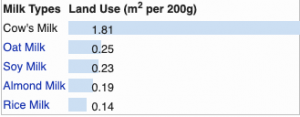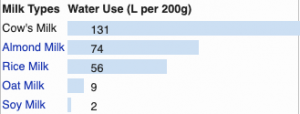These are initial sources I found when doing a search of recent articles about food insecurity in Maine households. I wrote more about this on the Tampopo google doc. I am interested to learn how restaurants and markets are staying open and delivering/ doing pick up grocery orders during this time. Also, I am curious to learn how food banks and schools, which provide meals for many families and children all over the state, are handeling food shortages and health procedures.
Category: Meddy Smith
Bondebjerg, I. (2014). Documentary and Cognitive Theory: Narrative, Emotion and Memory. Media and Communication, 2(1), 13-22.
I thought that it was very interesting to learn about the connection between environmental concern and lesbian communities and how that related to food. Choosing to be vegan or vegetarian connotes a specific ethic and aligns oneself with non-violence and challenges a pervasive existing food structure and norms which goes along with the queer lens we talked about in class. Food is used, in a reclamation of the domestic sphere, as a way to proclaim one’s values and identity.
I interviewed Brenda Landis who is involved with a community garden as well as her own ‘urban homestead’ in Carlisle. I was interested in learning about her experience living, working and raising a family in Carlisle and her perspective on local food systems. This connects to my capstone project because she has experience with local community gardens and policy related to food issues in the Borough. She is a neighborhood leader and an elected representative to the Carlisle Borough Council and she is passionate about food justice and local, inclusive community solutions to environmental problems.
I asked her questions that Professor Marini-Maio gave as examples, such as her daily commitment to her garden, where she draws her inspiration, and what her ‘homestead’ means to her.
Food Studies Gardener Interview
This is the powerpoint presentation I made of the photos and the interview.
These are photos she provided of her garden and the community garden she helped to create and run.













The first food that I saw from my list that I had been eating was plain yogurt. The first ingredient (one of just two) is pasteurized skim milk. The website of this brand, Siggi’s, wrote that the milk that they use comes from “family farms” in upstate New York and Wisconsin. The largest global exporter of milk, however, is New Zealand, but the U.S. is also a top worldwide producer. I was surprised to learn that in 2016, there was a worldwide excess of milk and governments began to decrease the overproduction. The most common practices of milk production in the US are automated milking from Holstein cows who spend their lives in industrial ‘farms’. Pasteurization is a process that reduces bacterial growth and extends shelf life of milk and is now widely used in many parts of the world. This development has changed the production of milk because it allows for milk to be shipped all over the country and reduces the need for fresh, local milk. For the production of milk, there are vast chemical and mechanical resources required for the industrial process. There are also great environmental resources needed for milk production, such as land and water and it’s production involves a staggering amount of greenhouse gas emissions, water and air pollution. Some dated approximations show the dairy industry as contributing to around 4% of total greenhouse gas emissions. There are various social impacts of the dairy industry, one being how the industrial and multi-national dairy companies have destroyed smaller farms and absorbed mid-size dairy operations and so have cut out more traditional forms of producing milk. Assuming the milk is coming from somewhere in the Midwest United States, the average food miles could be 1000 miles.
Interestingly, I drink another form of ‘milk’ everyday with coffee and the first ingredient in this plant milk is pea protein. It was challenging to find information on this ingredient because it is a newer alternative (the company was founded in 2014 and is awaiting a patent on their technology). The protein is extracted from yellow peas and added to many kinds of foods like energy bars, ice cream and veggie burgers. Peas are grown in colder climates worldwide, however Canada has 51% of the export market. More than 75% of US peas are exported to India, China and Spain for processing. Assuming the peas in this plant milk are coming from Canada, the food miles on this ingredient could be around 3,300 miles!
Below are some graphics comparing the various different kinds of dairy and plant-based milks and their environmental footprint in resources such as land and water. It appears that pea protein milk has the lowest water footprint and cow’s milk has the highest land/water use compared to all alternatives. This encourages me to consider the environmental impact of all dairy products, not only milk, and to be active in comparing the various impact of plant alternatives as well.
flour can have food miles totaling up to 6,926 miles.



One other food that I have been eating recently are bagels! The first ingredient listed for the brand I buy is organic wheat flour. China by far produces the most wheat out of any country in the world, however the U.S. and Russia are the top two exporters of wheat. Wheat is a valuable ingredient in many foods and has become one of the most-consumed foods in our diets. Wheat, as well as corn, is used in the making of processed foods and has radically altered diets and food systems around the world. The incredible increase in wheat production is due to synthetic nitrogen fertilizer introduced in the mid twentieth century, irrigation and genetically modifying crops for increased yield. Refined wheat flour is made from only certain parts of the kernel and many of the vitamins and nutrients are stripped away and often the product is chemically bleached. Assuming that the wheat is grown in China, flour can have food miles totaling up to 6,926 miles.
My name is Meddy and I am a senior Psychology major from Maine. I studied abroad last year in Spain and Denmark and I am interested in sustainable food systems and food insecurity. After graduation I hope to be involved in some capacity in building sustainable and resilient communities, using my psychology degree to understand sociocultural motivations for behaviors and my food studies certificate as a background for improving food security and strengthening local food systems. I love going to the Farm’s Gather dinners and getting the CSA from the college farm!
Recent Comments